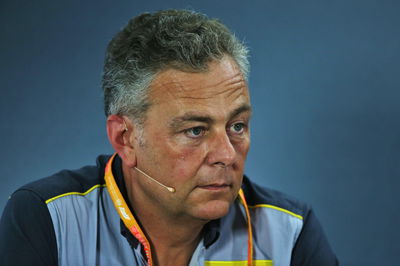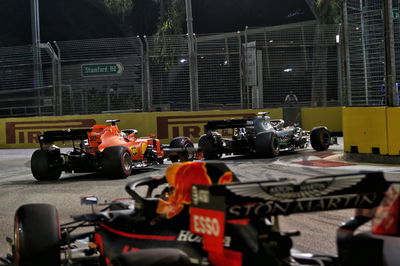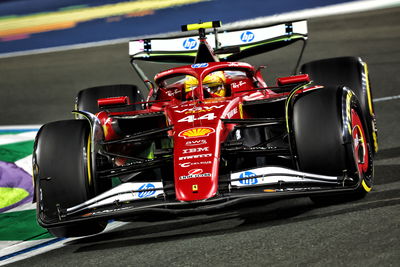Lessons to be learned from rejected 2020 F1 tyres for ’21
Pirelli Formula 1 chief Mario Isola believes lessons can still be learned from the development of the rejected 2020 tyres that will prove useful in forming the compounds for 2021.
Pirelli’s planned tyres for the 2020 season were rejected by the teams following a final test in Abu Dhabi at the end of last season, instead preferring to retain the ’19 constructions.

Pirelli Formula 1 chief Mario Isola believes lessons can still be learned from the development of the rejected 2020 tyres that will prove useful in forming the compounds for 2021.
Pirelli’s planned tyres for the 2020 season were rejected by the teams following a final test in Abu Dhabi at the end of last season, instead preferring to retain the ’19 constructions.
Accepting the 2020-spec tyres would have forced teams into late design changes on their cars due to the altered profile of the new compounds.
Despite the rejection of the 2020 tyres, Pirelli’s Isola explained to Crash.net at Autosport International there were still useful lessons that were learned which could be applied in the development of the 2021 tyres, which will increase in size from 13 to 18 inches.
“There are some concepts in the 2020 tyres that are useful also for 2021,” Isola said.
“When we tested in Abu Dhabi, we said that the 2020 tyres can be used at a lower pressure because the profile and some elements in the construction were designed exactly with this purpose. So it gave the opportunity to the teams to use a lower pressure, and also the other characteristics.
“The test in Abu Dhabi was a good test, a representative test that highlighted some positive aspects of the 2020 tyres, and some of the targets were not achieved. We have to take the good part of the concepts that are in the 2020 tyres.”
Isola said the rejection of the tyres would also prompt Pirelli to review its processes and understand why its simulations did not match up with the team’s findings once they hit the track with the new compounds.
“We need to understand why some of the targets were not achieved, because in some cases, we found slightly different results during our tyre development test. It’s important that we understand,” Isola said.
“We already did some analysis and we found some reasons why we had a different result, because this is part of a learning curve for us to also improve the test methodology, the test plan and so on. It’s not easy because we are testing with 10 different teams, 10 different cars.
“For next year we will have mule cars that are not the final version of the 2021 car. There are many elements that are playing a role into this development. This is life, and we need to do our best with the tools that we have. We cannot invent something that we don’t have.”











